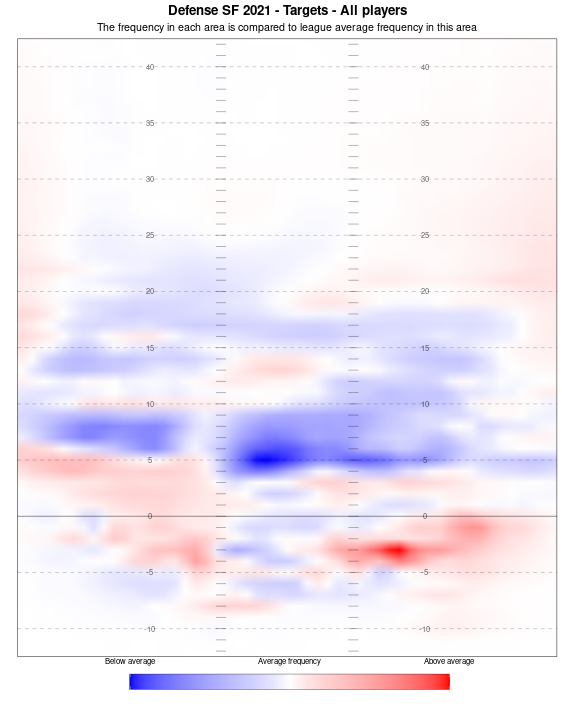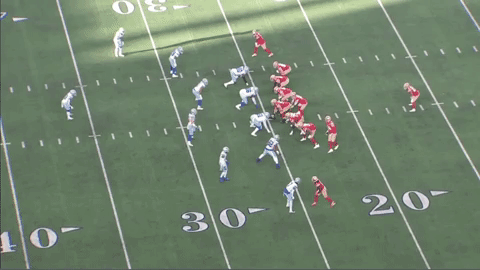fukk it, I used my girl's student e-mail to sign up for a half-off discount cuz I wanted to read this shyt. Imma cancel after the month so lemme know if ya'll want anything off PFF over the next month.
Galina: The shortcomings of the Kellen Moore-Dak Prescott connection for the Dallas Cowboys
The expectations of an NFL play caller and offensive coordinator are two-fold in the passing game.
First, their job is to win the chess match against defenses enough times to where the quarterback does not have to work through their progressions on a consistent basis. Calling plays based on the defense's expected reaction so that the passer can throw at the end of his dropback is paramount. Second, it’s to manufacture enough easy downfield throws per game where the play design allows for an explosive gain regardless of who is playing quarterback.
In the Dallas Cowboys’ wild-card loss to the San Francisco 49ers, offensive coordinator Kellen Moore failed on both counts. That left quarterback Dak Prescott on an island throughout the game — and often throughout the season too.
This isn’t to sweep under the rug head coach Mike McCarthy’s baffling in-game decision-making or the team's inability to run a play without first committing a pre-snap penalty. Dallas’ decision to leave its punt unit on the field on a first down against the 49ers’ actual defense is laughable, and it led to one of those pre-snap penalties. Over the course of the season, the Cowboys’ offense tied for the NFL lead in snaps on first-and-11 or more, and they had three such plays this weekend. Such miscues — 14 in total — constantly put them behind the eight-ball in the playoff loss.
Penalties aside, the Moore-Prescott connection needs some thorough examination. When everything is clicking, the duo can look like world-beaters. That’s why the Cowboys finished third in overall offensive success rate, but that often falls on Prescott being able to go through his progressions and complete a pass late in the down rather than Moore creating offense through the lens of the play caller’s expectations laid out earlier.
READING IT OUT
Of the 26 quarterbacks who threw 50 passes this season with a time to throw above three seconds from the pocket, Prescott ranked 24th in average depth of target while placing eighth in passing grade on such plays. The Cowboys slotted in at 19th in expected points added per play in these situations. This can be used as a proxy for Prescott’s ability to get through progressions and find the right receiver but the offense still not moving much.
Early in the 49ers game, Prescott was forced down to his fourth read — a swing pass to Ezekiel Elliott that the running back tried to catch with one hand before it fell to the turf.
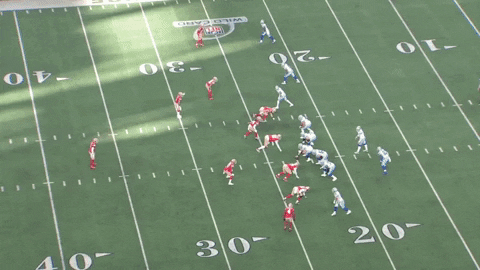
It’s really good quarterback play to read through the corner route to Cedrick Wilson, the first in-route to Amari Cooper, the second in-route to CeeDee Lamb and then to the running back on the swing pass. These plays tend to be a theme in this offense.
We just have to look at the offense that the Cowboys played against on Sunday to see the opposite. 49ers head coach and offensive play caller Kyle Shanahan has made a living on getting his quarterback to his first read as often as possible to take away any extra “quarterbacking.”
Prescott posted an 84.3 passing grade on plays where he threw the ball in under three seconds this season, while San Francisco quarterback Jimmy Garoppolo rang in at 73.7. That checks out to No. 7 versus No. 18, respectively, in the league. Yet, Garoppolo’s yards per attempt figure ranked second in the NFL. The 49ers’ concepts don’t have high degrees of difficulty, but the coordinator finds ways to get the ball into their playmakers' hands early and with space.
The 49ers finished this season with the most yards after the catch per completion while Dallas — with a bevy of playmakers itself — ranked 20th. Yards after catch can be, and often are, a product of offensive design.
The Moore offense seems to fall in the “grab bag” category of overall offensive schematics. In 2020, the Cowboys ran the classic “shallow cross” concept quite a bit. It’s a somewhat difficult concept involving routes over the middle of the field where, time and time again, Prescott had to find an open receiver late in the progression.
They barely run the play anymore. In fact, they didn’t run it at all against the 49ers. The offense being able to change year to year — while other offenses such as that of the 49ers, Packers or Titans can stay consistent in their base packages — and still have success is a testament to Prescott and even Moore for some of his play designs.
But, they are an offense without a major overarching identity in the dropback passing game. It’s not to say the offenses that do have an easy-to-spot identity are better or worse, but they seem to do a good job creating for the quarterback rather than the quarterback themself creating for the offense.
We see plays where the Cowboys call a concept expecting one type of coverage, get a different one and Dak is left stranded.
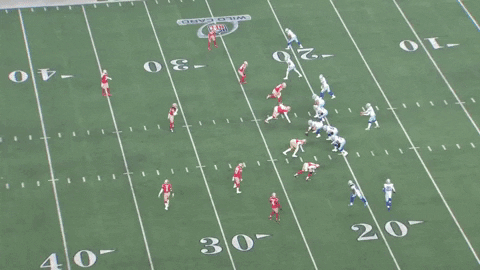
Here, they are expecting a Cover 2 shell. Wilson’s job is to hold the half-field safety, and Cooper’s is to run the out-n’-up over top of a low cornerback. They get a one-safety coverage instead, so Wilson runs into the safety and the cornerback stays high on top of Cooper.
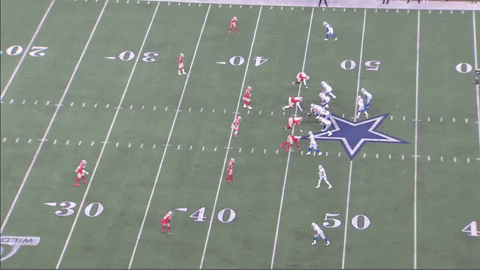
Later in the game, we saw the opposite — a play designed to crease Cover 2 but that instead got Cover 3. Tight end Dalton Schultz’s route is supposed to create a “hi-lo” effect on the Mike linebacker in Cover 2, and Dak will read him. When the 49ers spin down to Cover 3, they have enough intermediate zone droppers to account for Schultz and Wilson’s underneath route.
